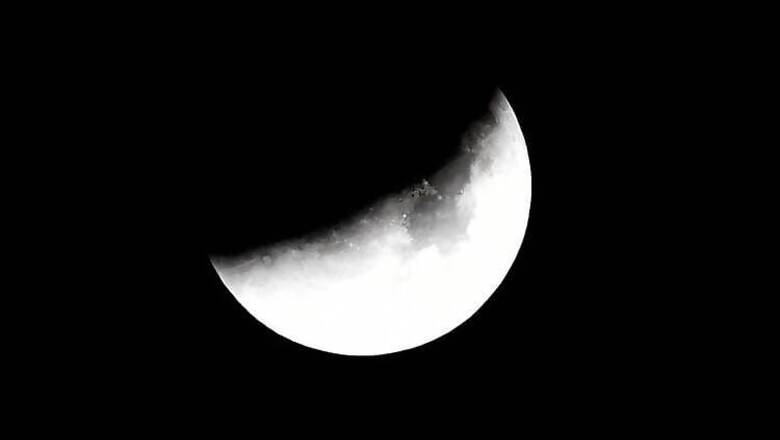
views
Moscow: Water reserves found on the Moon are the result of asteroids acting as "delivery vehicles" and not of falling ice comets as was previously thought, a new study using computer simulation has found.
Scientists have discovered that a large asteroid can deliver more water to the lunar surface than the cumulative fall of comets over a billion year period.
Vladimir Svettsov from Institute for Dynamics of Geospheres and Valery Shuvalov from Moscow Institute of Physics and Technology in Russia, developed the most probable mechanism of water delivery to the Moon and an approximate "supply" volume, using computerised modelling of the fall of cosmic bodies onto the surface of the Moon.
The typical velocity of an ice comet ranges from 20 to 50 km per second. The estimates suggested that such a high impact velocity causes from 95 to 99.9 per cent of the water to evaporate into space beyond retrieve.
There is a family of short-period comets whose velocity of fall is much lower - 8-10 km per second. Such short-period comets account for about 1.5 per cent of lunar craters.
The simulation has shown that when these short-period comets do fall, almost all the water evaporates and less than 1 per cent of it remains at the impact point.
"We came to the conclusion that only a very small amount of water that arrives with a comet stays on the Moon, and from this decided to explore the possibility of an asteroid origin of lunar water," Shuvalov said.
The scientists decided to take a closer look at asteroids and found that they consist of initially non-differentiated construction materials of the solar system and contain a rather considerable proportion of water.
In particular, chondrite carbonaceous, the most common type of asteroids and meteorites, can contain up to 10 per cent water.
However, water in chondrites is effectively protected - it is in a chemically bounded condition, and it is "blocked" in a crystal lattice of minerals.
Water starts to seep out when it is heated to 300-1200 degrees Celsius depending on the type of hydrous mineral. This means that it has the potential of remaining in the crater together with the asteroid.
The simulation has also showed that when the velocity of fall is 14 km per second and the angle of fall is 45 degrees, about half of the asteroid's mass will never even reach the fusing temperature and remains in a solid state.
One-third of all asteroids that fall on the Moon have a velocity of less than 14 km per second just before impact.
When this happens, the major part of the fallen body remains in the crater - 30-40 per cent is left after an oblique impact, and 60-70 per cent after a vertical one.
"We've concluded that the fall of asteroids containing water could generate "deposits" of chemically bounded water inside some lunar craters," Shuvalov said.
"The fall of one two-kilometre size asteroid with a rather high proportion of hydrated minerals could bring to the Moon more water than all of the comets that have fallen over billions of years," Shuvalov said.
The study was published in the journal Planetary and Space Science.

















Comments
0 comment